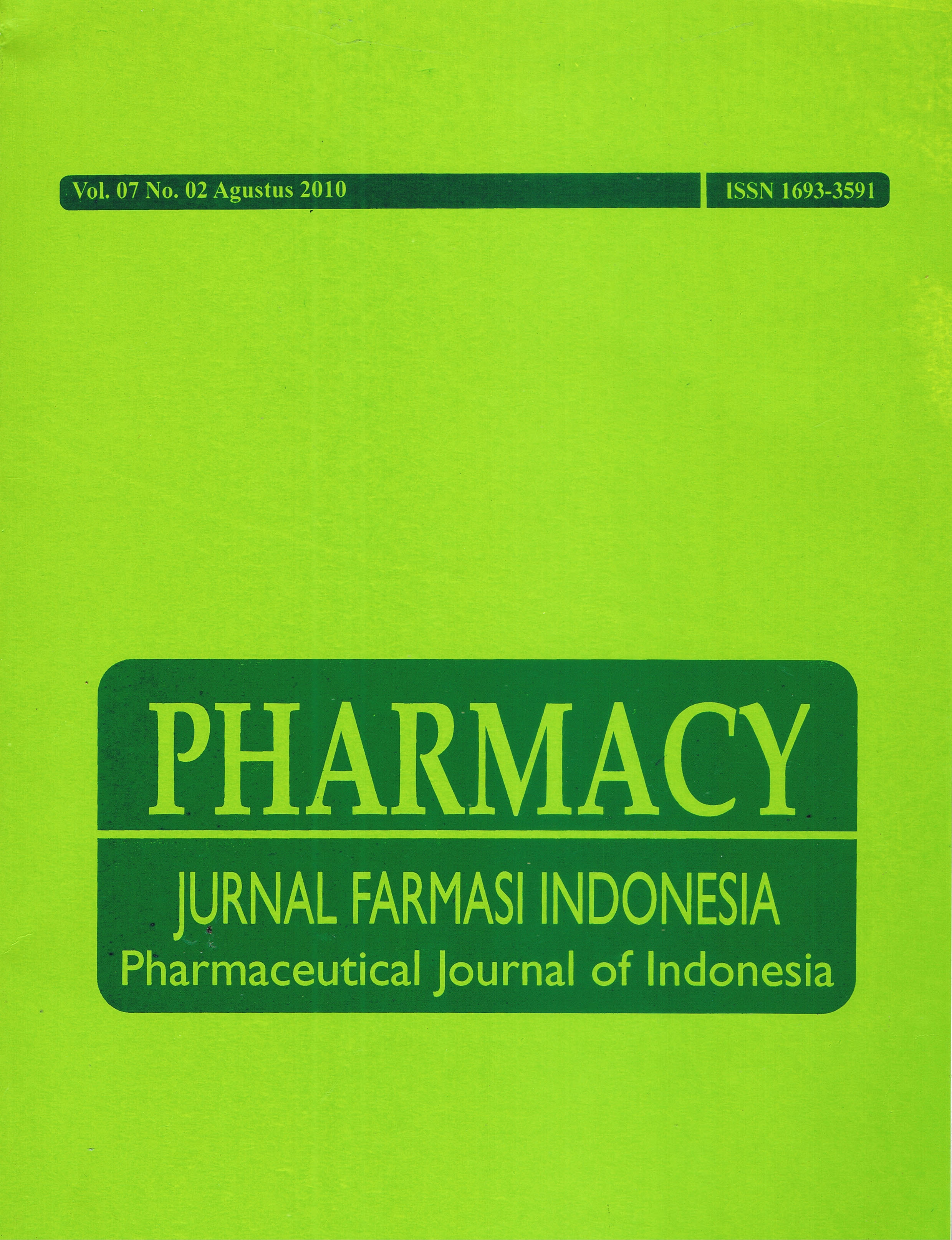AKTIVITAS ANTIJAMUR KRIM MINYAK ATSIRI RIMPANG LENGKUAS (Alpinia galanga L.) TERHADAP Candida albicans
DOI:
https://doi.org/10.30595/pji.v7i1.553Abstract
ABSTRAK Lengkuas (Alpinia galanga L.) mengandung minyak atsiri yang berkhasiat sebagai antijamur. Tujuan penelitian ini adalah untuk mengetahui aktivitas antijamur krim minyak atsiri terhadap Candida albicans. Minyak atsiri lengkuas diperoleh dengan cara destilasi uap air. Pada penelitian ini ada lima kelompok yang diujikan, yaitu formula I (krim ketokonazol) sebagai kontrol positif, formula II (krim tanpa penambahan minyak atsiri), formula III (krim dengan penambahan minyak atsiri 2 g), formula IV (krim dengan penambahan minyak atsiri 2,75 g), formula V (krim dengan penambahan minyak atsiri 3,50 g). Krim diuji fisik (uji organoleptis, homogenitas, daya menyebar, daya lengket) dan aktivitas antijamur terhadap Candida albicans. Data yang diperoleh dianalisis dengan Anava satu arah dilanjutkan dengan menggunakan uji BNT (Beda Nyata Terkecil). Hasil penelitian menujukkan bahwa semakin banyak penambahan minyak atsiri menyebabkan kenaikan daya sebar. Aktivitas antijamur krim minyak atsiri lengkuas terhadap Candida albicans meningkat dengan naiknya konsentrasi penambahan minyak atsiri. Kata Kunci : Minyak atsiri lengkuas, krim, Candida albicans ABSTRACT Alpinia galanga L. essential oil is active as antifungal agent. This reseach was aimed to find out Antifungal Activity of Alpinia Galanga Essential Oil Cream Against Candida albicans. Alpinia galanga essential oil was obtained by steam and water destillation method. There are five groups used in this research, there were Formula I (ketokonazol cream) as positive contol, Formula II (cream without addition of essential oil), Formula III ( cream with addition of essential oil 2 g), Formula IV (cream with addition of essential oil 2.75g), Formula V (cream with addition of essential oil 3.50 g). The cream were tested for physical properties (organoleptic, homogeneity, adhesiveness, spreading) and antifungal activity on Candida albicans. Data was analyzed by one way anava and continued by LSD (Least Significant Different) test of post hoc test. Research result indicated that a higher essential oil concentration will increase cream spreading. Antifungal activity of alpinia galanga essential oil cream increase along with increasing of essential oil concentration. Keyword : Alpinia galanga essential oil, cream, Candida albicans.References
Aminiati, A. 2007. Daya Antijamur Kompleks Inklusi Minyak Atsiri Daun Sirih β- Siklodekstrin Dalam Basis Salep PEG Terhadap Candida albicans secara in vitro, UMP, Purwokerto, Hal: 21.
________. 1995. Farmakope Indonesia Edisi IV. Jakarta Departemen Kesehatan Republik Indonesia. Hal: 6.
Edman, JC. 1996. Mikrobiologi Kedokteran, Edisi IV. Jakarta: Edy Nugraha dan Maulany, Penerjemah; Jakarta: EGC Hal: 628.
Hadioetomo, RS. 1993. Mikrobiologi Dasar Dalam Praktek. Gramedia : Jakarta. Hal: 42, 53.
Haraguchi, H; Kuwata, Y; K. Inada. 1996. Antifungal Activity From Alpinia galanga and the Competition for Incorporation Of Unsaturated Fatty Acid In Cell Growth. Planta Medica, pp: 308-313.
Lay, B.W.1994. Analisis Mikroba Di Laboratorium, Raja Grafinda Persada, Jakarta. Hal: 48.
Voight, R. 1995. Buku Pelajaran Teknologi Farmasi., Edisi ke-5. Yogyakarta: Gadjah Mada University Press. Hal: 764.
Downloads
Published
How to Cite
Issue
Section
License
Authors who publish with this journal agree to the following terms:
- Authors retain copyright and grant the journal right of first publication with the work simultaneously licensed under a Creative Commons Attribution 4.0 International License that allows others to share the work with an acknowledgement of the work's authorship and initial publication in this journal.
- Authors are able to enter into separate, additional contractual arrangements for the non-exclusive distribution of the journal's published version of the work (e.g., post it to an institutional repository or publish it in a book), with an acknowledgement of its initial publication in this journal.
- Authors are permitted and encouraged to post their work online (e.g., in institutional repositories or on their website) prior to and during the submission process, as it can lead to productive exchanges, as well as earlier and greater citation of published work (See The Effect of Open Access).






